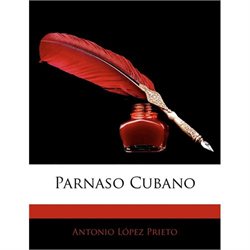3.7.17 Compilations and anthologies of Cuban literature between 1868 and 1898

During this period, several anthologies and literary compilations were conceived, most of them in the field of poetry, which demonstrate the development of our literature, as there was already sufficient diversity and quality of authors to warrant this type of selection. An interesting precedent for the period under review is the text “Literary Nights,” from 1866, which compiles the best pieces from the gatherings organized by Nicolás Azcárate at his residence in Guanabacoa.
In 1868 itself, the text “Photographic Poetic Album of Cuban Writers and Poets” was published for the first time. This constitutes a laudable initiative for its intention to disseminate Cuban female poetry, normally relegated to a secondary role due to the subaltern intellectual status with which women were generally considered within the social fabric.
The compilation was undertaken by Domitila García de Coronado as a spontaneous act, not based on an exhaustive historical and documentary review of our poetic arsenal. However, it was a success in terms of reclaiming the genre, and in subsequent editions it was enriched with contributions from other poets. Luisa Pérez de Zambrana and Gertrudis Gómez de Avellaneda, of course, constituted the most relevant voices included in the text.
In 1879, “Arpas Amigas” was published, which included poems by Francisco and Antonio Sellén, Luis Victoriano Betancourt, Enrique José Varona, Diego Vicente Tejera, Esteban Borrero, and José Varela Zequeira. The text aims to present current events in poetry rather than offer conclusive critical assessments.
In 1881, Antonio López Prieto published the compilation “Parnaso Cubano,” which constitutes the result of an exquisite historical-literary investigation. The compilation itself opens with the figure of Manuel de Zequeira (although it alludes referentially to Espejo de Paciencia and the sonnets that precede the composition) and includes the main poets who lived between the 18th and 19th centuries. In this sense, the work is rather guilty of excess, by including minor voices that had no significance either for the contemporary era or even for the 19th-century poetic universe.
In addition to other compilations of biographical sketches and articles on customs, poetic selections were published that responded more to political criteria, such as the one published by Francisco Calcagno under the title “Poetas de color” (Poets of Color) in 1878, which includes verses by Francisco Manzano and Plácido, interspersed with works by Black poets of inferior aesthetic quality. Even so, the attempt is commendable for its vindictive essence.
Of a similar nature was the book, prologued by José Martí and published in 1893, “The Poets of War,” which, in addition to the objective of disseminating works of some literary value, sought to elevate our independence struggle to a high aesthetic level through epic verses and others of lyrical heroism written with a machete, inspiring the great endeavor that Martí was already organizing. This text included pieces by Pedro Figueredo, Fernando Figueredo, Miguel Gerónimo Gutierrez, and Ramón Roa, among others.








